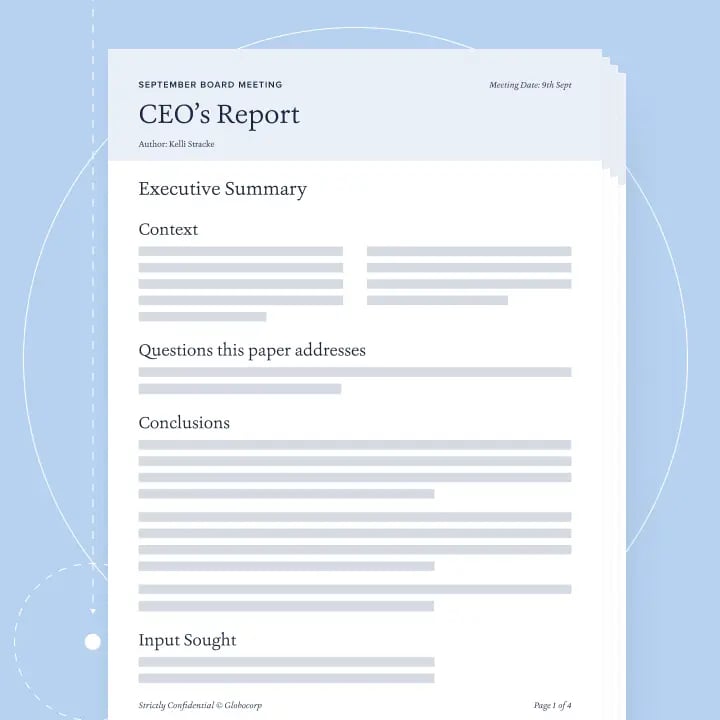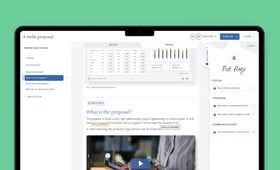The board pack drives conversation in the boardroom. If you feel your board discussions feel scattered or unproductive, your board papers may be the reason.
What is a board pack?
A board pack is the collection of documents, reports, and updates directors use to prepare for an upcoming board meeting. It gives a clear view of the organization’s current state and shares any changes since the last meeting. A strong board pack is essential to good governance. It keeps directors informed, encourages engagement, and holds executives accountable.
In the past, board packs were printed. Now, more organizations use digital board portals to keep sensitive information secure and make collaboration easier.
What makes an effective board pack?
When reviewing the quality of a pack, we consider six key areas:
1. Scope — are there any blindspots in your board pack?
Boards are responsible for steering and supervising the organization. Yet many board packs focus narrowly on internal data or financial performance, with little insight into outside developments. When was the last time your board got an update on industry trends or competitor moves?
Likewise, individual reports may have blindspots, only presenting a preferred solution, rather than assessing alternatives. Strong board packs give a broader, more balanced view.
2. Accessibility — how easily can the board access the information they need?
Board members are generally extremely busy. They need time to read and reflect before meetings. Board portals are critical for making this possible by giving directors instant access to the latest information and updated materials anytime and anywhere—even offline. This saves time and ensures everyone walks into the room prepared.
3. Style — is your board pack easy to read and digest?
George Bernard Shaw once said, “The single biggest problem with communication is the illusion that it has taken place.” Clear writing helps board members quickly grasp key points, add value in meetings, and make better decisions. The best board papers are no more than five pages long, well-structured, and highlight the main takeaway and action proposed by management.
Maintaining this clarity can be hard when many different people are involved in producing the reports. Consider using tools that drive and embed best practices at scale to upskill your authors and give your board effective papers.
4. Efficiency — are your board papers quick and easy to prepare?
Directors need time to read papers; management needs time to write them. Templates with clear and consistent formatting and prompts help maintain or improve efficiency. The result: board papers that stay focused on what matters most.
5. Expertise — does your board pack include contributions from experts?
Effective board packs include insights from the subject experts. Make sure contributors present their information clearly and easily digestible. Not everyone in the room is involved in day-to-day operations, so accessibility matters.
It’s vital that you plan ahead when setting deadlines for paper submissions to allow enough time to edit, review the pack’s content, and distribute it to board members well ahead of the meeting.
6. Impact — does your board pack stimulate valuable conversations?
Ultimately, the proof is in the pudding. The board pack stimulates boardroom conversation and should fuel focused, productive conversation. If meetings feel unfocused or slow to reach decisions, your materials might fall short.
Strong papers help the board cut to the heart of the matter. If you find that time is used poorly and decisions cannot be made efficiently, then it’s worth reflecting on how well your papers really support your board.
Choosing a board portal that makes your board packs all of these things and more.
Even the best board pack is useless if it gets lost in the post or left on a train, so to ensure that board members have access to the latest information, it is vital that you are able to choose the right board portal. Not sure where to start? Take a look at our complete guide to board portals for more details.




